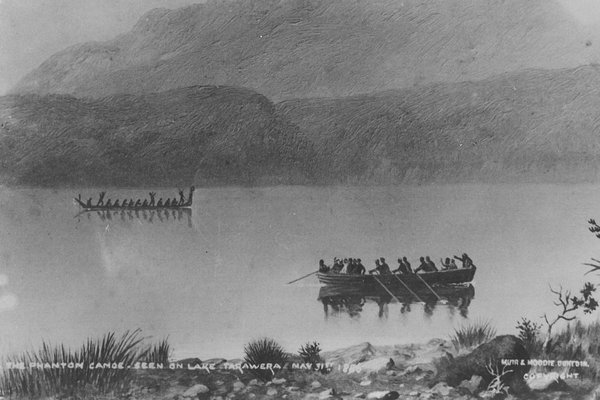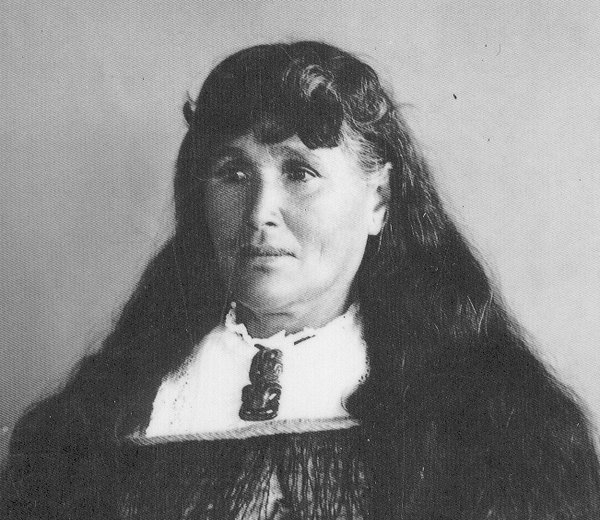Was the Lake Tarawera Phantom Canoe a supernatural sign?
The story of the Phantom Canoe is one backed by many eyewitness accounts. For this reason it seems almost impossible to dismiss as light trickery or the musings of a couple of good story tellers. What the story delivers for us, all these years later, is that connectivity between life and that which happens below the surface and the signs or omens, which in hindsight were there to warn of impending destruction.
What stories like these unearth for us is the unexplained connection between the elements, and how all those years ago it was possible to receive these messages, and is there still, in a modern, noisy and fragmented world, the ability to hear and see similar signs of warning?
So the story goes
In 1886 Lake Tarawera was a hive of tourist activity filled with travellers the world over, coming to these shores to take in the splendid beauty of the area's geothermic wonders and primarily, the now lost Pink and White Terraces. The Tarawera region rich in geothermal and volcanic beauty is dramatically dotted with volcanic cones like Ngauruhoe and Tarawera.
The geothermal and volcanic landscape plays a significant part in the phantom canoe story and delivers some ominous signs, made visible to those witnesses on 31 May 1886.
The story begins in the eerie shadow of Mt Tarawera, with its “burnt peak” where the mountain casts a ghostly shadow in the wintry sun. Despite the eeriness of that morning, the accounts from eyewitnesses aboard the tourist vessel were all clear and consistent.
The watchers had no difficulty in discerning the phantom craft's double row of occupants, one row paddling and the other standing wrapped in flax robes, their heads bowed and, according to Maori eyewitnesses, their hair plumed as for death with the feathers of the huia and the white heron. To the terrified Maori aboard the tourist vessel, these were the souls of the departed being ferried to the mountain of the dead. But all local Maori knew there was no war canoe on the lake, and no such craft, ever existed.
If not for multiple eyewitness accounts and evidence, the story of the phantom canoe would have remained just another story of embellishment or legend.
Mrs Sise (one of the tourists aboard the vessel) along with the other eyewitness accounts, reveal much about the validity of claims that would otherwise be disregarded. The party had a mixture of people who could be regarded as being disinterested or uninfluenced by superstition and Mrs Sise included that morning’s events in a letter to her son in Dunedin:
“Then to our surprise we found the Maoris in great excitement, and heard from McCrae [a permanent resident] and other Europeans that no such boat had ever been on the lake.”
The first sign – rising waters
Aboard the tourist vessel that morning was a group comprising the famous Maori guide Sophia renowned for her tours to and around the Pink and White Terraces, three other Maori women, six Maori rowers, and a Dr Ralph, Father Kelleher, a priest from Auckland, a Mr Quick, also from Auckland and Mrs Sise.
Before anyone in the group could enter the boat, the lake level rose swiftly, surrounding the group with water, and then the water subsided even more speedily. The Maori contingent reacted violently to this and at first refused to enter into the lake. After some persuasion they agreed to do so, though one of the boatmen was heard to say, “Very well, we can die but once, so we will all go down together”.
White steam cloud above an active volcano – probably not a good sign
Mrs Sise also later recalled the reaction of guide Sophia, who after seeing a white steam cloud hovering over Tarawera, quietly murmured, “I don't think I shall see the Terraces again”.
The Phantom Canoe – the most supernatural sign of them all
The sighting of the Phantom Canoe is best described in Mrs Sise's own words:
“After sailing for some time we saw in the distance a large boat, looking glorious in the mist and the sunlight. It was full of Maoris, some standing up, and it was near enough for me to see the sun glittering on the paddles. The boat was hailed but returned no answer. We thought so little of it at the time that Dr Ralph did not even turn to look at the canoe, and until our return to Te Wairoa in the evening we never gave it another thought”.
To the local Maori population the presence of the canoe had only one meaning. It was an omen of disaster. And Mrs Sise’s words in her letter provide even further validity “Then to our surprise we found the Maoris in great excitement and heard from McCrae [a permanent resident] and other Europeans that no such boat had ever been on the lake.”
A second tourist boat on the lake that morning also reported having sighted the ghost canoe, and one of the passengers on board Josiah Martin, sketched his impression.
The truth of the omens comes to light in volcanic fire
Eleven days later, Mt Tarawera erupted violently, sending fire fountains into the sky and raining hot ash down on nearby settlements. Three villages were completely obliterated and about 150 people lost their lives.
On the night of the eruption, over 60 people took shelter in Sophia’s whare at Te Wairoa. Unlike many of the buildings in the village her home withstood the destructive power of the eruption due to its high-pitched roof and strong reinforced timber walls. Before the eruption and before the phantom canoe sighting Sophia had already established a reputation as 'guide, philosopher, and friend' to many tourists. Perhaps it was in part, her connectedness with others that allowed her to take note of the multiple pre-warning signs on that trip, but perhaps given the opportunity we ourselves would have been intuitive enough to recognise their importance.
However, I doubt that many of us would have known what the signs pointed to.
Thankfully despite the destruction and devastation, the signs were heeded by some and lives were fortunately saved.










Connect with Us
Facebook YouTube Instagram Tripadvisor Blog Email